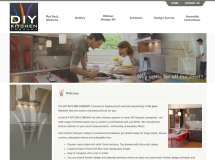Logos are everywhere, and for those who toil in the mines of design, they are the ideal – a single graphic signature meant to communicate the very essence of a company, product or person. The minds at CreativeBloq.com recently put together 20 of the biggest trends in logo design; here are five of the most interesting.
Black and white. In many ways color is to logos what digital is to design – it’s all just a little too cheap and easy these days. When Pantone continues to find dozens of new colors at a time, there’s something stoic and, well, respectable about some good black-and-white typecraft.
App Store Influence. Such is the ubiquity of smartphone and tablet apps, we’re starting to see that 3D-button look creep into the logos of some companies.
Transparent Overlaps. Shapes are linked together using subtle gradients for a single, unique look, as in this EDP logo.
Honest and Simple. “Homemade and thrifty is very in,” according to CreativeBloq, and who can say otherwise? The more homemade the logo looks, the less contaminated by the excesses of big business a product appears to be.
Incomplete. Missing pieces of a logo actually entice viewers to study it more. Check out the identity for market-research firm Basis, designed by Johnson Banks.
Script retro. If everything old is new again…aw heck, who cares – script is still the epitome of cool when done right, as in this example by BrandOpus for Willie Cacao chocolate.
Article Source: http://www.paperspecs.com/26426/20-logo-design-trends/













